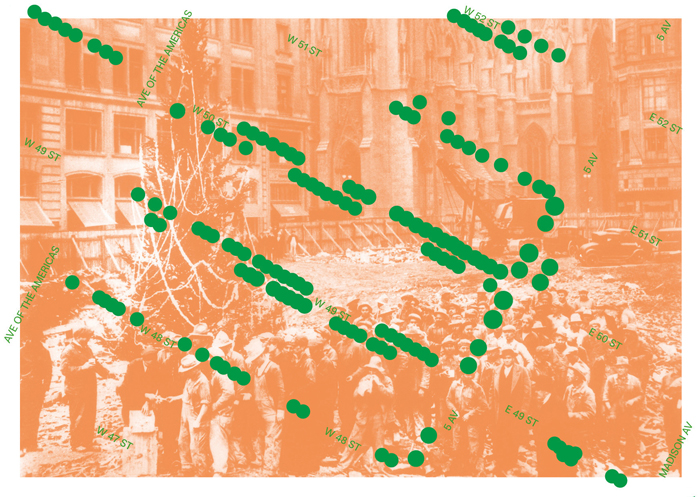Press Release
The Columbia University Graduate School of Architecture, Planning and Preservation (Columbia GSAPP) presents Offsetted, an exhibition conceived and designed by London-

Cooking Sections, Offsetted
Arthur Ross Architecture Gallery, New York (USA)
21.02 - 08.06.2019


© ArtCatalyse International / Marika Prévosto 2019. All Rights Reserved
A London plane tree at 728 Nostrand Avenue in Brooklyn reduces USD 13.55 of carbon dioxide annually. In Manhattan, a thornless honey locust at 320 East 42nd Street conserves USD 194.14 of energy. An ailanthus at 95 Astoria Boulevard in Queens intercepts USD 46.16 worth of storm water. In total, 678,183 street trees in New York City currently provide USD 109,625,536.06 in “environmental services” to the city every year. These services correlate to a tree’s biological functions, which are calculated in dollars—a mitigation scheme that positions trees as instruments to offset man-
Since the 1980s, environmental preservation efforts have increasingly deployed such economic frameworks. Though the environment as a concept remains an abstract entity of seemingly priceless value within the cultural imagination, its habitats are nevertheless mined as an economic resource to serve humans and have been unequivocally transformed into global financial investments. Offsetted examines the emergence of this valuation of nature, questioning the underlying logic and mechanisms of environmental protection. Focusing on New York City, the exhibition assembles histories of individual trees through an installation of branches, leaves, cross sections, and cores from the five boroughs, presenting episodes from the evolution of its urban environment when trees have played an active role in “serving the city.” From colonial settlements to community protests against gentrification, to recent “green renewal” projects such as Million Trees NYC, the case studies in the exhibition together uncover the political and economic interests behind the planting of trees in the city. Offsetted reveals the ways that trees have been mobilized to negotiate the permanence and disappearance of the built environment and, as a result, how they have been used to both displace people and secure their rights to occupancy.
Offsetted seeks to launch a public debate on the financialization of the environment—from the scale of a city tree to an ecological reserve—and on current forms of environmental justice. Throughout the duration of the exhibition, Cooking Sections will continue to explore the ways that value is extracted from trees in the city and global forms of green gentrification. A public discussion on February 22 at e-
The exhibition is organized by Irene Sunwoo, GSAPP Director of Exhibitions and Curator of the Arthur Ross Architecture Gallery, with Tiffany Lambert, Assistant Director of Exhibitions.
Offsetted began as a lecture-
Cooking Sections (Daniel Fernández Pascual & Alon Schwabe) is a duo of spatial practitioners based in London. It was born to explore the systems that organize the world through food. Using installation, performance, mapping and video, their research-
Founded in 1990, the Arthur Ross Architecture Gallery at Columbia GSAPP produces original exhibitions that explore new architectural practices, research, and ideas. Through its collaborations with architects and artists, historical investigations, and public programs the gallery fosters creative projects and scholarly inquiries that enrich and expand GSAPP’s culture of experimentation and critical thinking.
Offsetted: On the Rights of Trees: February 22, 7–9pm, Cooking Sections in conversation with Mari Margil and Elizabeth Yeampierre, moderated by Felicity Scott
e-

Cooking Sections, Offsetted, 2019. Grid of financialized street trees in Manhattan laid over the raising of the Christmas tree at the site of the future Rockefeller Center in 1931, NYC.